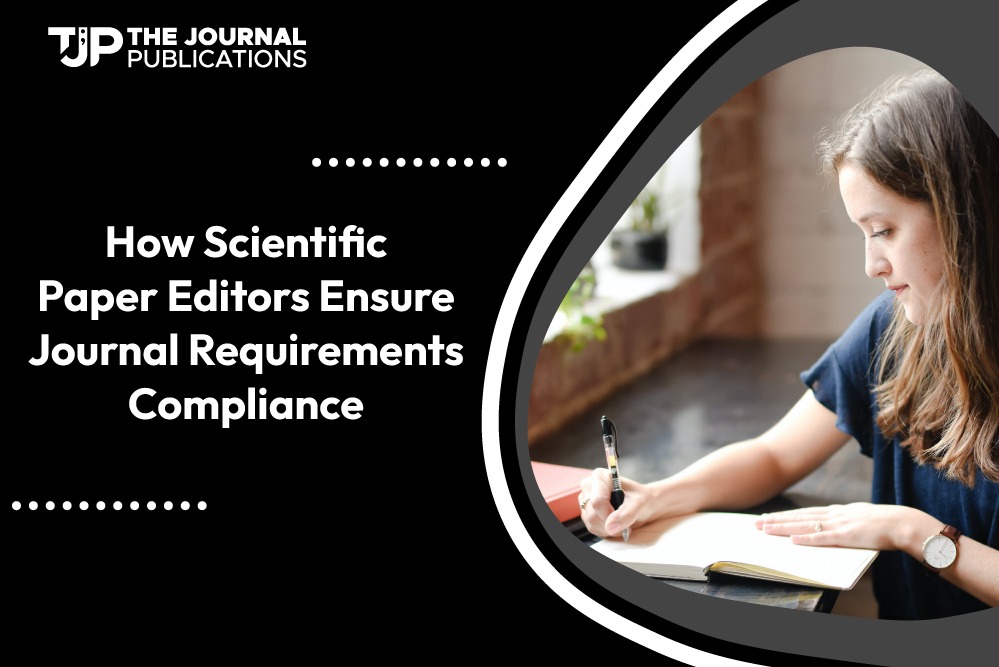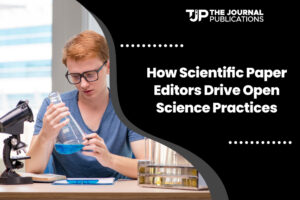Table of Contents
- How Scientific Paper Editors Ensure Journal Requirements Compliance
- Intro
- Scientific Paper Editors: Guardians of Quality
- Journal Guidelines: More Than Formatting
- Formatting and Structure: The Devil Is in the Details
- Managing Peer Review: The Editor’s Job
- Red Flags Identification and Assurance of Scientific Rigor
- Ensuring Language Quality and Accessibility
- The Importance of Abstract and Keywords
- Checking the Accuracy of References
- Supporting Revision Cycles
- Securing Supplemental Materials
- Ensuring Timelines are Met
- Complying with Open Access Policies
- Helping Authors Understand Rejection
- The Future of Scientific Paper Editing: AI and Automation
- Closing Note
Intro
Scientific papers are an important building block in developing knowledge in every field. However, the road of a research study from the laboratory to the published article is not as smooth as writing down the findings. Every research paper undergoes serious peer review, revising, and formatting before its acceptance for publication. In this process, Scientific paper editors are the unsung heroes of academic publishing. They not only ensure manuscripts meet the highest standards of quality, but they also meet specific requirements that come with scholarly journals. The article takes a look into how editors go ahead to ensure each submission meets the expectations of journals and is publication-ready.
Scientific Paper Editors: Guardians of Quality
The scientific manuscript editors are the watchguards of the academic publishing world. Their work is not only to proofread for grammatical errors but also to ensure that the integrity of the research process is maintained to the utmost standards. Editors work together with authors in polishing the manuscripts, providing essential feedback at times to enhance the clarity, accuracy, and scientific relevance of your paper. They maintain consistency in work and ensure that each paper meets ethical standards for academic publishing.

Journal Guidelines: More Than Formatting
Every academic journal has a set of rules that authors have to follow. These guidelines settle everything from the length of the paper to the citation styles, even to the structure of the abstract. For instance, one journal might require a certain referencing style, such as APA or MLA in their formatting, whereas another might use a completely different format. This is where the scientific paper editors must make sure that all these minute details are followed to the dot. Failure to observe such requirements means a complete rejection of manuscripts even when the research is of the most innovative nature. To avoid this, scientific manuscript editors ensure adequate review and adherence of the papers to the journals’ details.
Formatting and Structure: The Devil Is in the Details
Most researchers focus on the contents of the papers, for the scientific paper editor, formatting and structure are equally important. Everything from proper citation formats down to the proper structure for sections, such as IMRAD (Introduction, Methods, Results, Discussion). In many journals, even figure or table format corresponds to established standards. Editors check that all such formatting elements meet the guidelines provided by the journal. Some journals, even, have certain demands on the word count for every separate section of the paper. For example, an introduction might be below 500 words while a discussion can reach 2,000 words. Science editors will take care that these very often overlooked requirements are met.
Managing Peer Review: The Editor’s Job
The most straining stage of publication is peer review. While the reviewers assess the scientific merit of a manuscript, editors of scientific papers facilitate this process: they select the experts for research papers and take care of deadlines. They often act as an intermediary for the authors and reviewers, ensuring that constructive feedback is delivered to integrate it into subsequent drafts. They are also called upon to make judgments about a paper’s readiness to move to the next level, as well as when further revision is in order. In some cases, they even have to mediate disagreements between reviewers and authors.
Red Flags Identification and Assurance of Scientific Rigor
Scientific editors are trained to spot potential red flags that indicate poor methodology or conclusions in data. Therefore, the editors should check the manuscript for logical fallacies, misinterpreted data, or a very broad conclusion that is not supported by the research results. This critical analysis enables only scientifically rigorous papers to make it to publication. Many times, editors request additional experiments or deeper analyses from authors that will validate the research as sound and replicable.
Ensuring Language Quality and Accessibility
Scientific research is a global pursuit, but not all researchers are native English speakers. Most journal editors are linguistic experts who ensure that the manuscripts submitted by non-native speakers are intelligible and grammatically free of other linguistic errors. They help turn indecipherable technical jargon into compact, readable prose through which the research becomes readable to policymakers and industrialists among other researchers.
More so, the scientific paper editor maintains a positive tone in the manuscript. They encourage authors to state their positive findings without making an inflated claim.

The Importance of Abstract and Keywords
The abstract is often the first and sometimes the only part of a scientific paper that readers and reviewers will read. Editors, therefore, pay great attention to the abstract of a scientific paper to make sure it correctly reflects the research, including all the main findings without oversight of any critical detail.
Editors also pay attention to the keywords, emphasizing that they should be properly chosen. These keywords index the paper in various databases, such as PubMed, Scopus, or Google Scholar, for the intended audience to look at or view the research.
Checking the Accuracy of References
The accuracy of the references in the scientific manuscript is of the greatest importance. In addition to citation style, the references should represent the most recent and pertinent research. Editors ensure that a real reference exists for every reference cited in the manuscript and that all citations are in the journal’s preferred format. Most scientific editors use automated reference managers such as EndNote or Mendeley, which can significantly expedite their checking of citations.
Supporting Revision Cycles
One of the lesser-known responsibilities of paper editors is the management of revision cycles in manuscripts. Very often, after a paper undergoes peer review, it is sent back to the authors for revisions. The scientific paper editing help lead the authors through these revisions as they work on addressing the comments of the reviewers, refine their methodology, or reanalyze data where needed. They provide continuous support throughout the revision process.
Securing Supplemental Materials
Most scientific manuscripts are accompanied in their submission by a package of supplementary materials: either raw data, tables, and figures beyond what will fit in the main manuscript or complex figures. These supplementary materials are examined by the editors to ensure they follow the guidelines of the journal. They further ensure that it enhances rather than detracts from, the clarity and impact of the primary paper.
Ensuring Timelines are Met
Scientific publishing has to work within tight deadlines. Editors ensure submission timelines are observed and authors comply with them. This is even more vital in the case of special issues or conference proceedings, where time is of the essence. Technical editors communicate with authors and reviewers to process manuscripts efficiently within a stipulated timeframe.
Complying with Open Access Policies
Open-access publishing is a fast-growing use today. It makes research freely available to the public. The editors follow open-access policies. Properly license the content under Creative Commons or similar frameworks. Whether authors have paid open access fees associated with the publication, and if the paper is correctly deposited to the institutional repository where required.
Helping Authors Understand Rejection
No author would enjoy rejections, though this is the most common process of publication.
If the paper is rejected, the systematic editor gives constructive comments to help the authors understand why the manuscript was rejected and how to improve it for submission to another reputed journal.
The Future of Scientific Paper Editing: AI and Automation
Scientific editing has also been metamorphosing with technology. Many editors increasingly implement AI-enabled tools in service of enhancing the efficiency of the editing process. Examples include Grammarly and Turnitin, which help check for language errors and plagiarism. While these AI tools do not go without their helpfulness in speeding up the work. Human judgment remains paramount in ensuring scientific integrity and compliance with ethical standards.
Closing Note
Scientific paper editors perform a wide range of key tasks that guarantee each submission meets the high standards of scientific research. From formatting and ethical compliance to managing peer reviews and revisions. These editors are indispensable in maintaining quality and ensuring the credibility of published research. They do a great job, double-checking that only the best things come to the scientific community for the further progress of mankind in gaining new insights. They do a great job in performing a range of the key best things. Come to the expert scientific paper editing help for further progress and gaining new insights.





